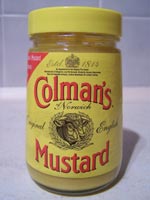![]() Where there are plants, there are almost certainly aphids feeding on them. These ubiquitous insects are banquets for many predators, and some have evolved incredible defences against them. The cabbage aphid, for example, is a walking bomb.
Where there are plants, there are almost certainly aphids feeding on them. These ubiquitous insects are banquets for many predators, and some have evolved incredible defences against them. The cabbage aphid, for example, is a walking bomb.
 Its body carries two reactive chemicals that only mix when a predator attacks it. The injured aphid dies. But in the process, the chemicals in its body react and trigger an explosion that delivers lethal amounts of poison to the predator, saving the rest of the colony.
Its body carries two reactive chemicals that only mix when a predator attacks it. The injured aphid dies. But in the process, the chemicals in its body react and trigger an explosion that delivers lethal amounts of poison to the predator, saving the rest of the colony.
The aphids' chemical weapons are stolen from the plants they eat. Far from being sitting ducks, plants defend themselves from herbivores with a wide range of poisons. Cruciferous vegetables, for example, such as mustard, watercress and wasabi, use a group of chemicals called glucosinolates.
These are harmless on their own, but when they come into contact with an enzyme called myrosinase, the result is a violent chemical reaction that produces several toxic products. Among these is allyl isothiocyanate, the substance that gives mustard and horseradish their strong, pungent flavour.
Because allyl isothiocyanate is harmful to the plant too, it stores the reactive chemicals in separate places. A wound inflicted by a feeding animal mixes the two chemicals and triggers a small chemical explosion.
Some caterpillars have evolved ways to deal with these defences, including proteins that inactivate or destroy the glucosinolates. But the cabbage aphid actually takes them into its own body, effectively stealing the plant's defence for itself.
 Like the plants it feeds on, the cabbage aphid has evolved its own version of the myrosinase enzyme. Eleanna Kazana and colleagues from Imperial College London found that the enzyme is stored in the muscles of the head and thorax. Even the youngest embryos have some,and continue to produce and accumulate the enzyme throughout their lives.
Like the plants it feeds on, the cabbage aphid has evolved its own version of the myrosinase enzyme. Eleanna Kazana and colleagues from Imperial College London found that the enzyme is stored in the muscles of the head and thorax. Even the youngest embryos have some,and continue to produce and accumulate the enzyme throughout their lives.
But Kazana also found that they almost totally depend on plants for their supply of glucosinolates, such as sinigrin. Mother aphids give their larvae a chemical donation by passing on some sinigrin from their abdomens. Beyond that, it is the youngster's responsibility to get more for itself.
The feeding aphids transfer the vast majority of the sinigrin in their food to their blood, where it stays safely separate from the activating myrosinase in their muscles. They only mix and react when something causes blood and muscle to mingle - like the bite of a predator.
To test whether this supposed defence mechanism actually works, Kazana exposed some aphids to ladybird larvae, one of their main enemies (see below). When attacked, aphids that had been fed with sinigrin solution released a volatile cocktail consisting mainly of allyl isothiocyanate. The chemical spray poisoned the ladybirds. Those exposed to it failed to develop into adults and died. There was no question about the defence's effectiveness - it was 100% fatal.
 However, aphids develop into wingless and winged forms, and Kazana found that larvae that attacked winged aphids fared much better. Only one in six of these attackers died of chemical poisoning.
However, aphids develop into wingless and winged forms, and Kazana found that larvae that attacked winged aphids fared much better. Only one in six of these attackers died of chemical poisoning.
By analysing the content of the aphids' droppings (a sweet liquid called honeydew), Kazana found that the winged ones were simply excreting any sinigrin that they ate.
Of course, fliers don't really need to worry about ladybird attacks because they can simply take off to safety. Kazana believes that storing the plant's chemicals takes a lot of energy and with another defence available, the winged aphids don't bother.
The wingless ones can certainly protect themselves. But that seems like small consolation for the bitten individual, which still suffers lethal injuries. Why is it willing to die for the sake of the rest of the colony?
The answer lies in their relationship to their peers. Aphids mainly reproduce asexually, so all the individuals in a colony are clones of each other. With several hundred other individuals carrying the exact same genes, it's a fair trade for one individual to meet its end in order to drive away and kill a predator.
Reference: Kazana, Pope, Tibbles, Bridges, Pickett, Bones, Powell & Rossiter. The cabbage aphid: a walking mustard oil bomb. Proc Roy Soc B. doi.10.1098/rspb.2007.0237.
More on aphids:




Dude, Colman's is the best fucking mustard on Earth!! Corned beef and cabbage with Colman's is fucking heaven!!!!!!!1